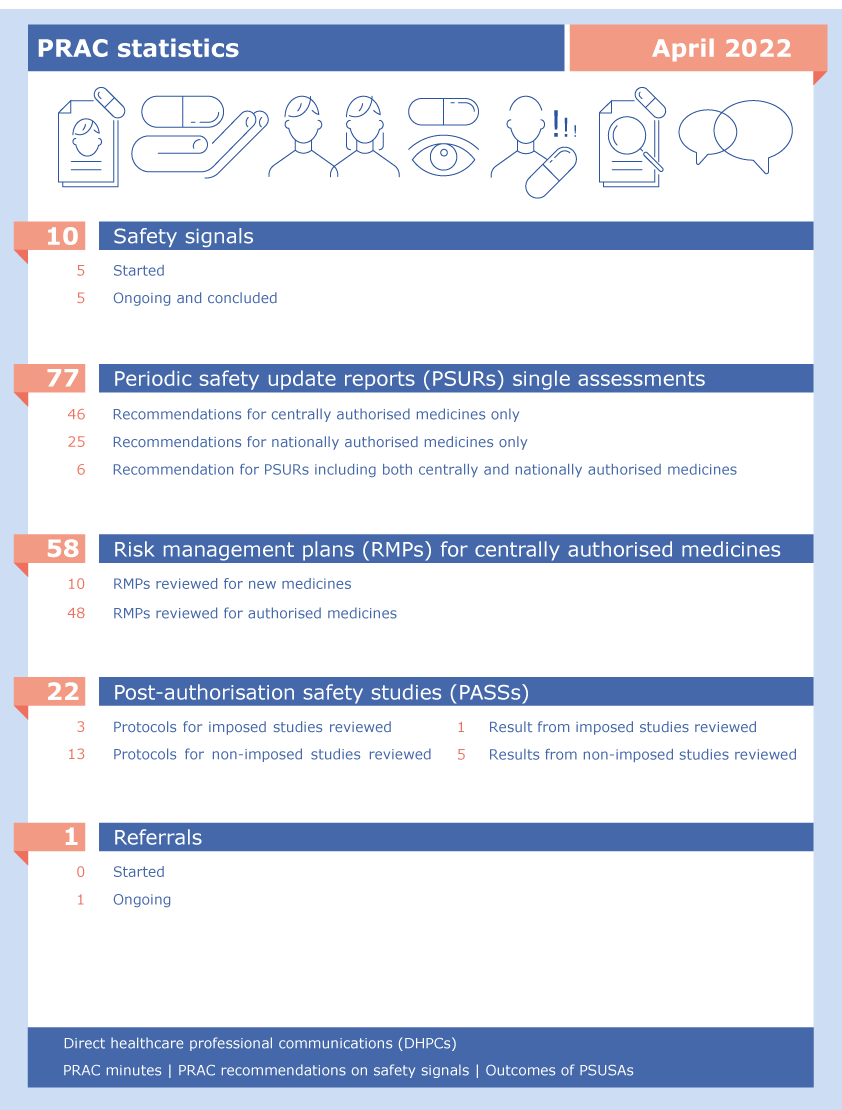Meeting highlights from the Pharmacovigilance Risk Assessment Committee (PRAC) 4-7 April 2022
NewsHumanCOVID-19PharmacovigilanceReferralsVaccines
The PRAC has concluded that available evidence does not support a causal link between COVID-19 vaccines Comirnaty and Spikevax and very rare cases of autoimmune hepatitis (AIH).
AIH is a serious chronic inflammatory condition in which the immune system attacks and damages the liver. Signs and symptoms of autoimmune hepatitis vary from person to person and may include yellowing of the skin (jaundice), build-up of fluid in the legs (oedema) or belly (ascites) and gastrointestinal symptoms.
The committee’s assessment is based on data from medical literature, cases of AIH spontaneously reported in the EudraVigilance database and further data and analyses provided by the marketing authorisation holders.
The PRAC concluded that the available evidence does not currently warrant an update to the product information of the vaccines.
EMA will continue to closely monitor any new reports of the condition and take appropriate measures if necessary.
As part of its advice on safety-related aspects to other EMA committees, the PRAC discussed a direct healthcare professional communication (DHPC) containing important safety information for Nulojix.
Nulojix: Risk of medication errors due to change in maintenance dose
This DHPC aims to inform healthcare professionals of the risk of medication errors due to a change in the maintenance dose to 6 mg/kg.
Nulojix (belatacept) is used in adults to prevent the body from rejecting a transplanted kidney. It is used together with corticosteroids and mycophenolic acid (other medicines used to prevent organ rejection). Nulojix is a powder that is made up into a solution for infusion (drip into a vein). Doses are calculated using the patient’s weight. In the initial phase, which lasts three months, it is given at a dose of 10 mg per kilogram of body weight. After that phase, Nulojix is given at a maintenance dose every four weeks.
The maintenance dose for Nulojix will be changed from 5 mg/kg to 6 mg/kg as a consequence of the implementation of a new manufacturing process. However, for approximately one to two months, Nulojix from both manufacturing processes will coexist on the market, and therefore two different dose recommendations will apply. A mix-up between the products may lead to medication errors resulting in over- or underdosing. Healthcare professionals are advised to carefully check the dose for the specific product to be administered, to make appropriate adjustments for weight-based dosing calculations.
The DHPC for Nulojix will be forwarded to EMA’s human medicines committee, the CHMP. Following the CHMP decision, the DHPC will be disseminated to healthcare professionals by the marketing authorisation holder, according to an agreed communication plan, and published on the Direct healthcare professional communications page and in national registers in EU Member States.

|
Procedure |
Status |
Update |
|---|---|---|
| Amfepramone-containing medicinal products - Article - 31 Referral | Under evaluation | PRAC continued its assessment |
| Janus Kinase inhibitors (JAKi) – Article 20 Referral | Under evaluation | PRAC continued its assessment |
| Nomegestrol and chlormadinone - Article - 31 Referral | Under evaluation | PRAC continued its assessment |
| Terlipressin-containing medicinal products-Article 31 Referral | Under evaluation | PRAC continued its assessment |